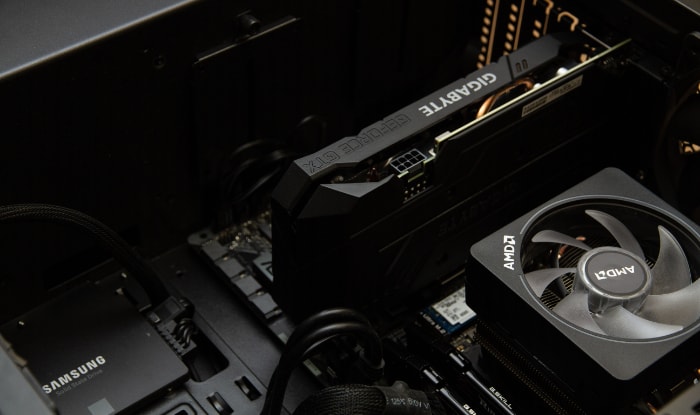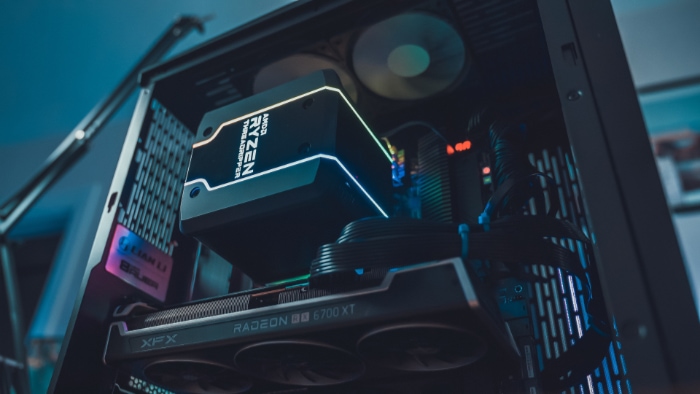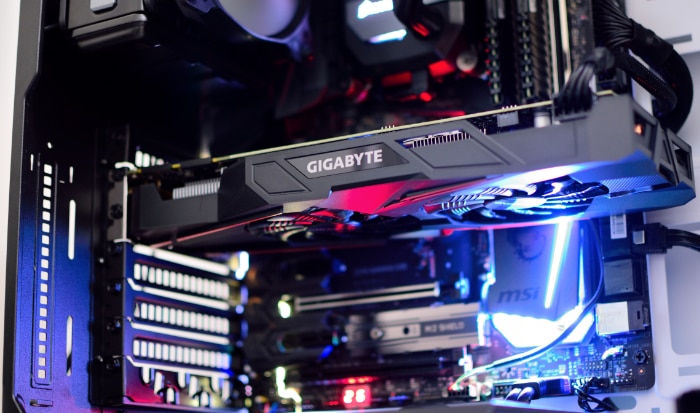How Overclocking Affects Your GPU’s Lifespan

Overclocking, a term that resonates with enthusiasts in the computing world, particularly among gamers and performance seekers, has long been a topic of debate and interest. Essentially, overclocking refers to the process of increasing a component’s clock rate, making it run at a speed greater than it was designed for or certified to handle.
In this context, we are primarily focusing on Graphics Processing Units (GPUs), a crucial component of a computer system, specifically in tasks related to rendering images, animations, and video for the computer screen.
The main appeal of overclocking is the pursuit of enhanced system performance without the need for hardware upgrades. While this can be an enticing prospect for many, the potential risks and implications, particularly the impact on the lifespan of the component in question, are considerable factors that require understanding and mitigation.
The Process of Overclocking
Overclocking, in the simplest terms, involves adjusting a computer component’s clock rate to run at a higher speed than it was designed to operate.
This process takes advantage of the fact that most computer hardware is designed with a safety margin to account for various operating conditions. Overclocking essentially pushes the component beyond this safety margin, squeezing out additional performance.
When it comes to a GPU, overclocking usually involves increasing the speed of the GPU cores and the memory. The faster the cores and memory can operate, the more calculations can be performed and the more data can be processed, which ultimately leads to better graphics performance.
How Overclocking Affects GPU Performance
The main goal of overclocking a GPU is to improve its performance. This can result in higher frame rates in games, faster rendering times in graphics-intensive tasks, and overall better performance in any task that relies heavily on the GPU.
The degree of improvement can vary widely depending on the specific GPU, the extent of the overclock, and the application or game being run.
However, it’s important to note that there’s a limit to how much performance can be gained through overclocking. Pushing a GPU too far can lead to instability, graphical glitches, and even hardware damage if not done carefully.
Common Methods of GPU Overclocking
Overclocking a GPU typically involves using software provided by the GPU manufacturer or third-party applications. These tools allow the user to adjust the GPU’s clock speed and voltage settings.
Some common tools include the Nvidia Control Panel for Nvidia GPUs, AMD Radeon Settings for AMD GPUs, and third-party programs like MSI Afterburner.
The overclocking process generally involves gradually increasing the GPU’s clock speed while periodically testing the system for stability. This is often done using stress tests or benchmarks that push the GPU to its limit.
If the system remains stable and no graphical errors occur, the clock speed is further increased. This process continues until the maximum stable overclock is found.
It’s important to note that overclocking can increase the heat produced by the GPU. Therefore, proper cooling is crucial when attempting to overclock a GPU to prevent overheating and potential damage.
Potential Risks and Benefits of Overclocking
Overclocking offers the tantalizing prospect of achieving more performance from your GPU without the expense of a hardware upgrade. In particular, the benefits include better graphics rendering and improved frame rates in video games, faster computation in GPU-accelerated applications, and superior performance in tasks that are particularly demanding on the GPU.
The performance gains are most noticeable when a GPU is under heavy load, such as when running a high-end game or performing a complex computation. Under such conditions, an overclocked GPU can make the difference between a smooth, playable frame rate and a choppy, frustrating experience.
Possible Risks to the System
While the performance gains can be significant, overclocking also comes with potential risks. When a GPU is overclocked, it is essentially pushed beyond the manufacturer’s recommended operating conditions. This can lead to several potential issues.
Overheating: Operating at higher clock speeds generates more heat. Without adequate cooling, the GPU can overheat, leading to performance throttling, instability, or even permanent damage.
System Instability: An unstable overclock can cause system crashes or graphical glitches. In extreme cases, it may even prevent the system from booting.
Reduced Lifespan: Consistently operating at higher temperatures can wear out the GPU more quickly, reducing its overall lifespan.
Voiding Warranty: Some manufacturers consider overclocking to be a form of misuse and may not honor the warranty on an overclocked GPU.
Countermeasures to Mitigate These Risks
Despite these potential risks, there are steps that can be taken to mitigate them.
Proper Cooling: Ensure that your GPU has adequate cooling. This can include having a case with good airflow, using a GPU with a good cooling solution, or adding aftermarket cooling solutions such as water cooling.
Incremental Increases: Overclock in small increments and test the system thoroughly at each step. This can help identify the point at which the overclock becomes unstable before it leads to serious problems.
Monitor Temperatures: Keep a close eye on GPU temperatures during overclocking. Many software utilities can provide real-time temperature data.
Understand Your Hardware: Different GPUs have different overclocking capabilities. Doing your research beforehand can provide an idea of what kind of overclocks might be achievable.
How Overclocking May Affect GPU Lifespan

One critical factor to consider when discussing the effect of overclocking on GPU lifespan is heat generation. All electronic components, including GPUs, generate heat during operation. This heat generation is a by-product of the electrical energy being converted into computational power. When a GPU is overclocked, it consumes more power, thus generating more heat.
Continuous exposure to high temperatures can lead to accelerated wear and tear on the GPU. Specifically, it can degrade the solder joints, the silicon in the GPU chip, and other components over time, ultimately leading to a reduced lifespan.
High temperatures can also lead to thermal throttling, where the GPU reduces its speed to prevent overheating, thus negating any performance gains from overclocking.
The Correlation Between Power Consumption, Voltage, and Lifespan
Overclocking a GPU often requires an increase in voltage to maintain system stability at higher clock speeds. This increase in voltage leads to an increase in power consumption, which in turn leads to more heat generation.
Additionally, increasing the voltage can stress the electrical components of the GPU and contribute to a phenomenon known as electromigration. Electromigration is the displacement of metal atoms in the chip due to high electron flow, leading to eventual failure of the circuits.
Thus, there’s a direct correlation between power consumption, voltage, and the lifespan of a GPU: as power consumption and voltage increase (which is the case when overclocking), the lifespan of the GPU can potentially decrease.
Analysis of Potential Physical Damage Due to Overclocking
While the risk of immediate, catastrophic damage due to overclocking is low with modern GPUs (thanks to built-in safeguards), there is still a risk of long-term damage.
Constantly running a GPU at high temperatures and voltages can accelerate the wear and tear of its components, potentially causing it to fail earlier than it would have under normal operating conditions.
However, it’s important to note that the exact impact of overclocking on GPU lifespan can be challenging to quantify. It depends on many factors, including the quality of the GPU’s manufacturing, the effectiveness of its cooling solution, the extent of the overclock, and the amount of time the GPU spends under heavy load.
Evidence and Case Studies
Over the years, numerous anecdotes from tech enthusiasts and gamers suggest both positive and negative outcomes from overclocking.
In some instances, users have reported significant performance improvements with no noticeable reduction in GPU lifespan, primarily when adequate cooling solutions were used and the overclocking process was handled with care.
In contrast, others have experienced GPU failures or noticed performance degradation over time due to aggressive and continuous overclocking.
However, it’s important to note that these are individual cases and can be influenced by various factors, including the manufacturing quality of the GPU, the cooling solutions employed, and the intensity and duration of the overclock.
Comparison of Overclocked and Non-overclocked GPUs, Focusing on Lifespan and Performance
Studies comparing overclocked and non-overclocked GPUs are somewhat scarce due to the inherent challenges involved in such comparisons. Still, some data points suggest that overclocking, especially when done to extreme levels, can reduce the GPU lifespan to a certain degree.
However, the performance gains from overclocking can often outweigh the potential reduction in lifespan, especially for users who upgrade their GPUs every few years. On the other hand, for users who intend to use their GPU for a prolonged period, overclocking might not be the best strategy due to the potential reduction in lifespan.
Discuss Studies and Research on the Topic
While empirical evidence from real-world usage often provides practical insight, rigorous academic or industry research on this topic is limited, partly due to the difficulty in controlling for all the variables involved.
However, it’s generally accepted within the industry that continuous operation at high temperatures and voltages — which are conditions associated with overclocking — can accelerate wear and tear on electronic components, potentially reducing their lifespan.
Additionally, studies on electromigration in electronics suggest that an increase in voltage can lead to a reduced lifespan of circuits, which can indirectly apply to the impact of overclocking on GPU lifespan.
Best Practices for Safe Overclocking

To gain the benefits of overclocking while mitigating potential harm, a methodical and cautious approach should be taken. Here are some steps to safely overclock a GPU:
Research: Before beginning, understand your GPU’s capabilities and limits. Check online forums and guides to see what kind of overclocks others have achieved with the same model.
Use Reliable Software: Use trustworthy overclocking software such as MSI Afterburner, EVGA Precision X, or your GPU manufacturer’s proprietary software.
Incremental Changes: Don’t rush the process. Increase the clock speed gradually, in small increments. After each adjustment, test the stability of the system.
Stability Testing: Use benchmarking and stress-testing software to verify that the GPU can handle the increased speeds. Look for visual artifacts, system instability, or crashes that may signal that the GPU is being pushed too hard.
Monitor Temperatures: Keep an eye on the GPU’s temperature during the testing process. If it gets too hot, it may be necessary to improve the cooling setup or reduce the overclock.
Importance of Monitoring GPU Temperature and Load
Monitoring the GPU’s temperature and load during overclocking is crucial for maintaining system stability and avoiding damage. Most overclocking software provides built-in monitoring features that allow you to track these parameters in real-time.
Keeping temperatures in check is important because overheating can lead to system instability, throttling, and, over time, wear out the components of the GPU, reducing its lifespan. A safe temperature will depend on the specific GPU model, but generally, keeping it under 80-85°C under heavy load is advisable.
Discuss Cooling Systems and Thermal Paste, and Their Role in Overclocking
Proper cooling is essential when overclocking a GPU. More heat is generated due to the increased power consumption, and this heat must be effectively dissipated to prevent the GPU from overheating.
There are various types of cooling solutions available, ranging from the fans and heatsinks included with most GPUs to aftermarket air coolers and even liquid cooling systems for more extreme overclocking.
Thermal paste also plays a significant role in cooling. This paste improves the conduction of heat between the GPU chip and the cooler. Over time, thermal paste can dry out and become less effective, so it’s a good idea to replace it every few years.
Properly applying these best practices will maximize the benefits of overclocking your GPU while minimizing the potential damage, allowing you to get the most out of your hardware investment.
Conclusion
Overclocking a GPU can provide substantial performance gains, enhancing graphical capabilities and improving performance in gaming and other GPU-intensive tasks.
However, these improvements can come with potential downsides, most notably the possibility of a reduced lifespan for the GPU. This is primarily due to increased heat generation and power consumption, which can accelerate the wear and tear on the GPU’s components and potentially lead to earlier failure.
To mitigate these potential downsides, safe and responsible overclocking practices should be employed. This includes making incremental changes, regularly monitoring temperatures and system stability, and ensuring adequate cooling.
With these practices, it’s possible to enjoy the benefits of overclocking while minimizing the potential risks and damage to the GPU.
While it’s clear that overclocking can potentially reduce a GPU’s lifespan, it’s important to note that the degree of impact can vary greatly depending on numerous factors.
In many cases, the performance gains from overclocking may outweigh the potential reduction in lifespan, especially for users who plan to upgrade their GPU every few years.
On the other hand, for those who intend to keep their GPU for a longer period, or those who value system stability above all, overclocking might not be the best choice. Ultimately, the decision to overclock or not is a personal one, requiring careful consideration of the potential benefits and risks.


